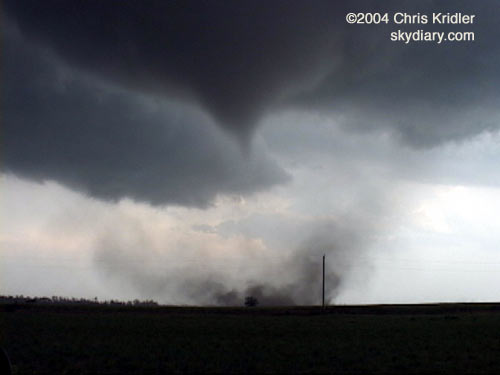There are a lot of storm chasers tearing their hair out tonight on Facebook as they see media coverage of the San Antonio tornado – and all the other tornadoes that have struck in the past couple of days. This is even worse than the “There was no warning!” cliche that showed up on ABC after a recent outbreak, when there was lots of warning, relatively speaking. In this case, as noted by chaser Scott McPartland, a TV station in San Antonio was telling people to send in their tornado photos in the middle of the event, when its audience was in imminent danger, instead of telling people in the path of the storm to seek shelter.
This kind of coverage is wrong on a number of levels, but just for starters, it’s encouraging untrained people to risk their lives for a photo. The request for images, especially during the event, subtly minimizes the danger by implying that it’s perfectly OK to stand outside in a tornado and take photos. Storm chasers do this kind of thing all the time, but we have some idea of how the storm will behave, in what direction it’s moving, and when to get out of the way. When “news” people take the same path as sensationalistic reality shows, which tend to present chasing as an amusement-park ride, they are sending a message that somehow holding a camera will prevent you from getting killed.There’s another side effect of this crowdsourcing of severe weather events: Photos of tornadoes from OTHER days and storms are being sent in and put on TV as part of the current event. This hoaxing is becoming widespread, and TV stations and other media outlets (print/online included), eager for free and dramatic content, are posting them without checking the facts. Not only are they treading on someone else’s copyright, like that of my friends at Cloud 9 Tours, but they are obfuscating the truth and making themselves look silly in the process.
I’m not into media-bashing. I still work for various media outlets as a freelancer. But news people have a job here, and it isn’t getting hot ratings. While many on-air meteorologists and journalists do a fantastic job of warning the public during severe weather, irresponsible coverage will only incur more criticism and damage journalists’ credibility. The first concern in a life-threatening situation should be to pass on warnings to the public, not get the “extreme” shot. And a little verification of all those nice, free reports from citizen journalists wouldn’t hurt. At some point, immediacy ceases to be an excuse.

